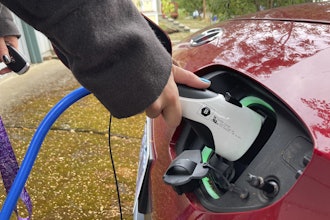From the cute waste collector, WALL-E to the terrifying Terminator, films seem to portray robots similarly — overthrowing humanity. In reality, robots are rapidly appearing in manufacturing facilities, but are they taking over? In this article, Jonathan Wilkins, marketing director at obsolete industrial parts supplier, EU Automation, explains how automation is impacting the US manufacturing workforce.
Increased automation has changed the manufacturing industry in the US. Manufacturers are rapidly introducing robotics to the assembly line. In fact, North American companies bought 32 percent more robots in 2017 than in the same period in 2016.
Manufacturers are introducing robots to the factory to meet customer demands as they can quickly and efficiently complete tasks to increase productivity and help companies remain competitive. As manufacturers rely more on technology, the human workforce will need to adapt to make the most of the new technology available to them.
Reports
A recent report by the McKinsey Global Institute predicts that between 39 million and 73 million jobs in the US could be lost to automation.
The actual number will depend on how rapidly the country adopts automation in each sector, how the growing aging population will change demands and how each sector will have to adapt to support economic growth.
Loss And Creation
It may appear that automation will only negatively impact employment in the US. However, reports suggest that the introduction of robotics will create jobs to change different industries.
The McKinsey report implies that around 20 million workers that could lose their job to automation will find it fairly easy to find work in a similar occupation. Those who cannot have to retrain and work in entirely new occupations.
However, this is not new to us. The workforce has evolved many times to make way for technology. Jobs such as switchboard operators and elevator operators are now obsolete, but people found ways to retrain and find work in other sectors.
The Types Of Jobs
Robots can complete many blue-collar jobs currently completed by humans more quickly and more accurately. Technology optimizes production but needs humans to make a difference. There are jobs in a range of industries that require human qualities, such as intuition, creativity, and care.
Many manufacturers automate tasks that are repetitive, straining and time-consuming for humans. Instead, the human workforce can move to roles that require more soft skills such as collaboration, communication and problem-solving.
Some people may also choose to move across sectors. As education improves, people will have a wider range of skills that they can apply to roles in different sectors and choose to move around different job roles rather than staying in a similar role throughout their working life.
What We Need To Do
The best way to reduce unemployment due to automation is to manage the transition from human led to machine led facilities. The best way for employers to do this is through retraining.
The McKinsey Report suggests that between 16 million and 54 million workers, or around a third of the US workforce, will need retraining for entirely new occupations. Employers should invest in retraining the staff they already have to complete more creative jobs in the facility.
Changes in the workforce will ultimately depend on how rapidly automation changes the manufacturing sector. However, we should not assume that the robots will overthrow us like they do in the movies. Manufacturers must invest in retraining to ensure their workers are in a secure role.
Jonathan Wilkins is EU Automation's marketing director.























